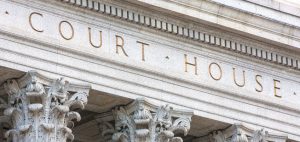WASHINGTON D.C.
A Columbia, Missouri, man was sentenced to 19 years and eight months in prison in federal court today for his role in making preparations to launch a terrorist attack with persons he believed were members of the Islamic State of Iraq and al-Sham (ISIS), who were actually undercover law enforcement officials, federal officials announced Wednesday.
 U.S. District Judge Greg Kays also sentenced Robert Lorenzo Hester Jr., 28, to a lifetime of supervision when he is released from prison, according to officials.
U.S. District Judge Greg Kays also sentenced Robert Lorenzo Hester Jr., 28, to a lifetime of supervision when he is released from prison, according to officials.
Hester pleaded guilty on Sept. 24, 2019, to attempting to provide support to ISIS from October 2016 to Feb. 17, 2017.
Officials said Hester knew that it was a designated foreign terrorist organization that engages in terrorist activity. Hester actively attempted to plot a mass casualty attack with others that he believed were acting on behalf of ISIS.
Hester drew the attention of law enforcement through advocating violence on social media, and when contacted by undercover officers, he immediately showed that he wanted action in addition to words.
Law enforcement contacted Hester to see if he was truly committed to an act of terrorism, and his responses left no doubt that he was.
Hester, who has been in federal custody since his arrest in February 2017, is a U.S. citizen. He was enlisted in the U.S. Army for less than a year, receiving a general discharge from service in mid-2013, according to authorities.
According to the plea agreement, multiple confidential sources reported to the FBI that Hester had posted a variety of material on multiple social media accounts.
 Hester indicated that he had converted to Islam, expressed animus toward the United States, and posted photos of weapons and the ISIS flag, among other material, suggesting an adherence to radical Islamic ideology and a propensity for violence.
Hester indicated that he had converted to Islam, expressed animus toward the United States, and posted photos of weapons and the ISIS flag, among other material, suggesting an adherence to radical Islamic ideology and a propensity for violence.
In order to assess whether Hester posed a security threat, the FBI undertook a series of investigative steps, beginning with an examination of whether and to what extent Hester would engage directly online with confidential sources working for the FBI and, later, with FBI employees working in an undercover capacity.
FBI employees using undercover identities communicated with Hester via social media, texting and personal meetings on several occasions.
In those conversations, Hester said, for example, that the U.S. government should be “overthrown,” and he suggested “hitting” the government “hard,” while noting that it would not be “a one man job.”
Hester identified categories of potential targets for attack, including “oil production,” “military bases,” “federal places,” “government officials,” and “Wall Street.” Hester specified that “[a]ny government building in DC would get attention of everyone.”
He said he wanted a “global jihad.” Citing his brief enlistment in the U.S. Army, Hester also claimed proficiency with “assault weapons” and said that his favorite firearm was the AK-47 rifle.
Hester spoke about the perceived ease in which one could gain access to a military base.
Hester established an apparent willingness to act on the statements that he made online.
An undercover FBI employee communicating online with Hester offered an in-person meeting with a like-minded “brother.” Hester agreed to meet and subsequently did meet on numerous occasions with a person who was described as, and Hester believed was, a terrorist operative – but who, in reality, was an employee of the FBI working in an undercover capacity.
Throughout their conversations, the undercover employee provided Hester a number of opportunities to dissociate with no questions asked, but Hester repeatedly reaffirmed his commitment to their plot, federal officials stated.
In the meetings, the FBI undercover made clear to Hester that the undercover was representing a foreign terrorist organization (ISIS) and that the undercover was planning an attack that would involve multiple operatives, deploy bombs and guns, and result in mass casualties. Hester indicated through his statements and actions that he was ready and willing to participate and assist in the “plot.”
Hester obtained, at the undercover’s request, items that he was told would be used as bomb components, including boxes of roofing nails. The undercover made clear to Hester that the nails’ purpose was to maximize the number of casualties.
In addition, Hester did not hesitate when the undercover showed him a cache of three machine guns and two handguns that would be used in the “attack,” and two pipes that would be used to construct the “bombs.”
In fact, in the days after seeing this display, which was arrayed in the rear compartment of the undercover’s SUV, Hester provided information on storage units that could be used to hold the weapons and agreed to obtain additional supplies for the operation.
As the plea agreement cites in greater detail, throughout the investigation, Hester expressed his interest in and exhibited his willingness to commit violence in support and on behalf of ISIS, officials stated.
DOJ NOTED:
This case was prosecuted by Assistant U.S. Attorneys Brian P. Casey and David Raskin and Trial Attorney Jennifer Levy of the National Security Division’s Counterterrorism Section.
It was investigated by the FBI.

